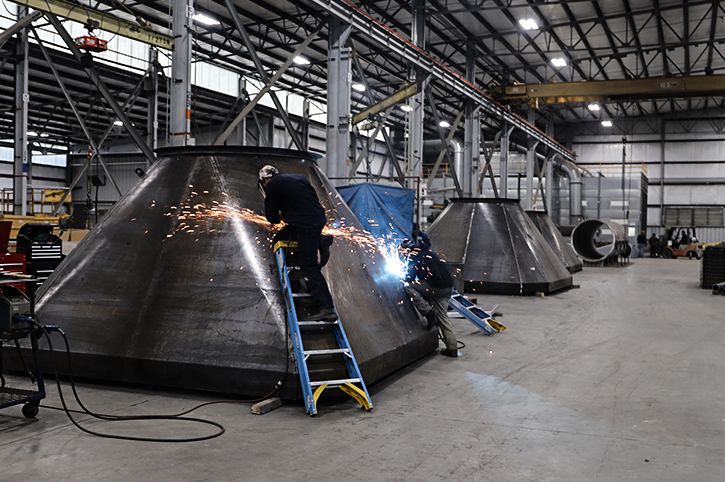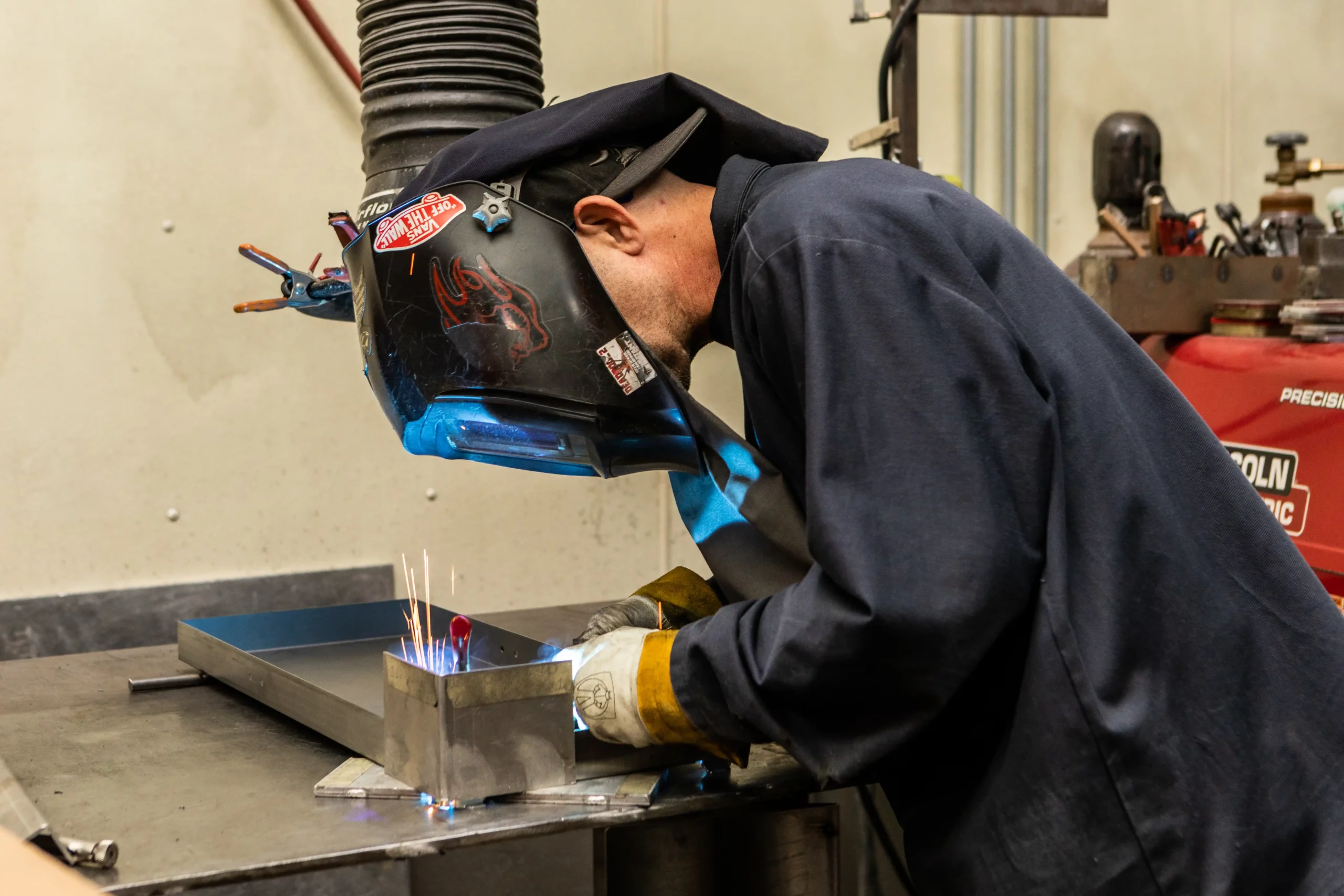Common Welding Repair Service Issues and Exactly How to Address Them Effectively
Welding fixings typically come across an array of problems that can endanger the honesty of the end product. Common problems include poor penetration, porosity, and misalignment, amongst others. Each issue offers special challenges that call for details strategies for resolution. Recognizing these concerns is important for welders intending to enhance their outcomes and abilities. This conversation will explore these usual welding repair work issues and reliable methods to resolve them.
Inadequate Penetration
Insufficient penetration takes place when the weld steel stops working to fully fuse with the base product, resulting in weak joints and possible architectural failures. This concern typically comes from insufficient warmth input, wrong electrode angle, or incorrect welding rate. Welders might encounter inadequate penetration because of a mistake of the required specifications for a details product thickness or type. Additionally, contamination on the base material's surface can impede reliable bonding, worsening the problem. To address insufficient infiltration, welders need to ensure ideal setups on their devices and preserve a clean work surface. Normal evaluation of welds is recommended to identify any type of shortages early, allowing for prompt adjustments and the prevention of endangered structural honesty in welded assemblies.
Porosity
Porosity is an usual flaw in welded joints that materializes as tiny gas bubbles trapped within the weld steel. This flaw can endanger the stability of the weld, leading to lowered strength and potential failure under stress. Belgrade Fabrication. Porosity usually develops from contamination, wetness, or incorrect welding methods, which permit gases to leave into the molten weld pool. To address porosity, welders must assure correct surface area prep work, keep a tidy working atmosphere, and use appropriate welding specifications. In addition, choosing the right filler material and shielding gas can reduce gas entrapment. Regular examination and testing of welds can aid identify porosity early, ensuring timely rehabilitative activities are taken, thus protecting the top quality and reliability of the welded structure
Imbalance
Imbalance in welding can emerge from different aspects, including improper setup and thermal expansion. Understanding the source is vital for reliable resolution. Numerous improvement techniques are offered to realign parts and ensure architectural stability.
Sources of Misalignment
Welding misalignment commonly comes from a range of underlying problems that can compromise structural integrity. One main reason is incorrect fit-up of elements before welding, which can lead to gaps and irregular surfaces. Variants in thermal development throughout the welding procedure can likewise lead to distortion, specifically if the products being joined have various coefficients of expansion. Furthermore, inadequate securing and fixturing may stop working to hold components securely in location, leading to activity during welding. Improperly kept equipment, including welding makers and devices, may present disparities in the weld bead, more adding to misalignment. Driver mistake, stemming from insufficient training or experience, can also play a significant role in creating misaligned welds.

Adjustment Methods Available
Attending to misalignment properly needs a mix of rehabilitative methods tailored to the details issues available. One typical technique is making use of components or jigs to hold elements in the appropriate setting throughout welding, making certain regular positioning. Furthermore, pre-heating the products can help in reducing distortion and boost fit-up. For substantial imbalance, mechanical adjustment strategies, such as making use of hydraulic jacks or clamps, can be employed to deal with the setting before welding. Post-weld warm therapy may also be essential to eliminate stresses brought on by misalignment. Lastly, mindful examination and adjustment throughout the arrangement phase can prevent misalignment issues from becoming considerable troubles, advertising a smoother welding procedure and boosting total structural stability.
Distortion
Distortion is an usual difficulty in welding that can develop from different elements, including irregular cooling and heating. Recognizing the causes of distortion is vital for executing effective prevention methods. Addressing this problem not just improves architectural integrity yet likewise improves the total quality of the weld.
Root causes of Distortion
When subjected to the extreme heat of welding, materials typically undergo modifications that can lead to distortion. This phenomenon mostly occurs from thermal development and contraction throughout the welding procedure. As the weld area warms up, the material broadens; upon cooling, it gets, which can produce interior anxieties. In enhancement, irregular home heating across a workpiece can worsen these stresses, causing warping or flexing. The sort of material additionally plays a significant duty; metals with differing thermal conductivity and coefficients of expansion might respond in a different way, resulting in uncertain distortions. Additionally, inadequate joint style and poor fixturing can add to imbalance throughout welding, enhancing the chance of distortion. Recognizing these reasons is important for reliable welding fixing and avoidance strategies.
Prevention Techniques
Efficient prevention strategies for distortion during welding concentrate on regulating heat input and ensuring appropriate joint style. Maintaining a consistent warmth input assists to minimize thermal development and tightening, which can cause distortion. Utilizing techniques such as preheating the work surface can also minimize the temperature gradient, advertising consistent home heating. Additionally, selecting suitable joint styles, such as T-joints or lap joints, can improve security and lower tension focus. Carrying out proper fixturing to safeguard the work surfaces in place even more help in keeping placement during the welding procedure. Lastly, staggered welding sequences can distribute warmth extra evenly, stopping local distortion. By using these approaches, welders can considerably lower the chance of distortion and boost the overall quality of their welds.
Breaking
Cracking is a typical issue experienced in welding repair work, commonly arising from different variables such as incorrect cooling rates, product selection, or poor joint preparation. The occurrence of splits can greatly compromise the stability of the weld, causing potential failures during procedure. To resolve this problem, welders have to initially examine the origin, ensuring that products are suitable and appropriately picked for the specific application. In addition, regulating the air conditioning rate throughout the welding procedure is important; rapid air conditioning can induce anxiety and lead to cracking. Proper joint layout and prep work likewise add to lessening the threat. Implementing these approaches can improve weld high quality and toughness, eventually minimizing the possibility of breaking in completed weldments.
.jpeg?width=1200&height=675&name=Mold%20Repair%20Welding%20Image%20(1).jpeg)
Insufficient Fusion
A significant problem in welding repair work is insufficient blend, which happens when the weld steel does not adequately bond with the base product or previous weld passes - Belgrade Fabrication. This flaw can result in weak points in the joint, possibly jeopardizing the integrity of the check my source welded framework. Variables contributing to incomplete blend consist of not enough heat input, inappropriate welding strategy, and contamination of the surface areas being joined. To address this concern properly, welders ought to assure appropriate pre-weld cleaning and surface prep work, as well as readjust their additional reading welding criteria to attain ample penetration and combination. Regular evaluation throughout the welding process can also assist identify insufficient blend early, permitting timely rehabilitative procedures to enhance the overall top quality of the weld
Overheating
While welding fixings can boost structural stability, overheating presents a significant difficulty that can bring about product destruction. Too much heat during welding can change the mechanical residential or commercial properties of metals, causing decreased stamina, increased brittleness, and warping. This phenomenon is particularly vital in high-stress applications where architectural dependability is paramount. Identifying overheating can entail visual assessments for discoloration or distortion, along with monitoring temperature level throughout the welding procedure. To mitigate the dangers connected with overheating, welders should utilize proper strategies, such as controlling warmth input, changing traveling speed, and utilizing ideal filler materials. In addition, implementing pre- and post-weld warm treatments can help restore material buildings and boost the overall quality of the repair work, guaranteeing long-lasting efficiency and security.
Regularly Asked Questions
What Are the Common Indicators of a Welding Flaw?

Just How Can I Check My Welds for Quality?
To examine welds for quality, one can use visual assessments, ultrasonic screening, and radiographic approaches. Each strategy ensures structural honesty, identifies defects, and verifies Website adherence to specified requirements, ultimately boosting the integrity of the bonded joints.
What Security Preventative Measures Should I Take While Welding?
When welding, one should prioritize security by using proper individual protective tools, guaranteeing correct ventilation, safeguarding combustible materials away, keeping a clean work space, and knowing surroundings to avoid injuries and crashes.
Can I Repair a Weld Without Remodeling the Entire Joint?
Fixing a weld without redesigning the entire joint is feasible, depending on the damages (Belgrade). Methods such as grinding, adding filler material, or using a welding procedure can properly deal with specific problems while maintaining the surrounding structure
What Tools Are Important for Efficient Welding Repairs?
Important tools for efficient welding repairs consist of a welding equipment, cord brush, mill, protective gear, clamps, and filler products. Each tool plays an essential function in making certain quality and safety and security throughout the repair process. Porosity normally arises from contamination, dampness, or incorrect welding techniques, which allow gases to leave into the liquified weld swimming pool. Poorly kept tools, consisting of welding machines and tools, might introduce disparities in the weld bead, more adding to misalignment. When subjected to the intense warm of welding, materials frequently undergo adjustments that can lead to distortion. Cracking is an usual issue come across in welding fixings, often resulting from different variables such as improper air conditioning prices, product option, or insufficient joint preparation. A significant concern in welding repairs is incomplete combination, which takes place when the weld steel does not appropriately bond with the base product or previous weld passes.
Comments on “Essential steps to eliminate porosity in welds with Belgrade Welding”